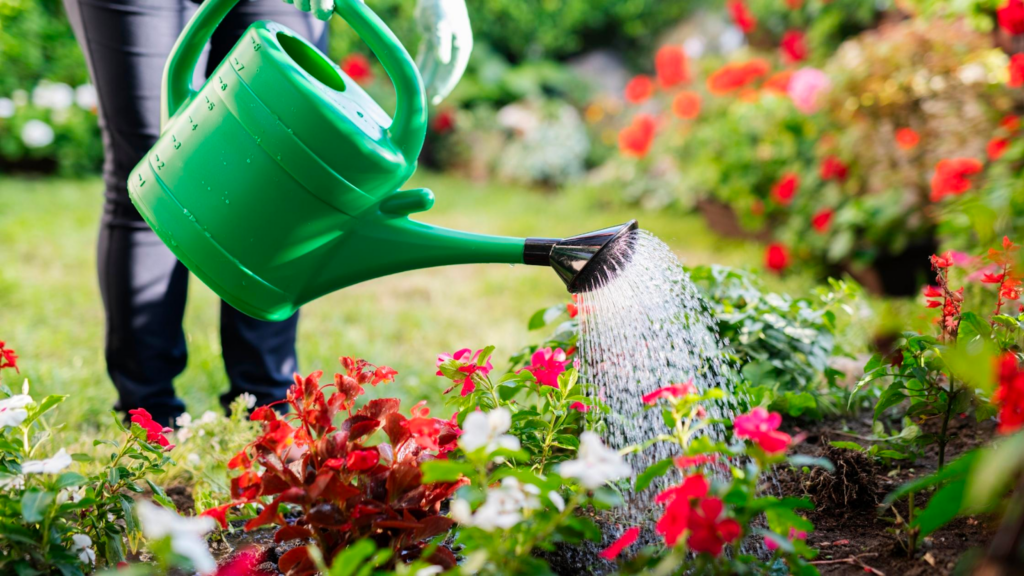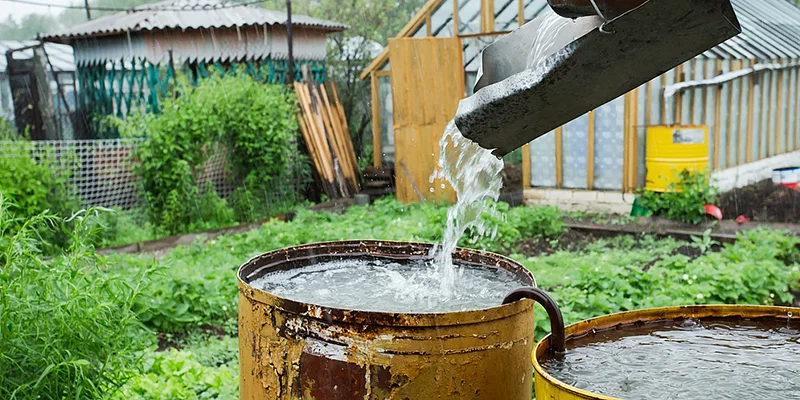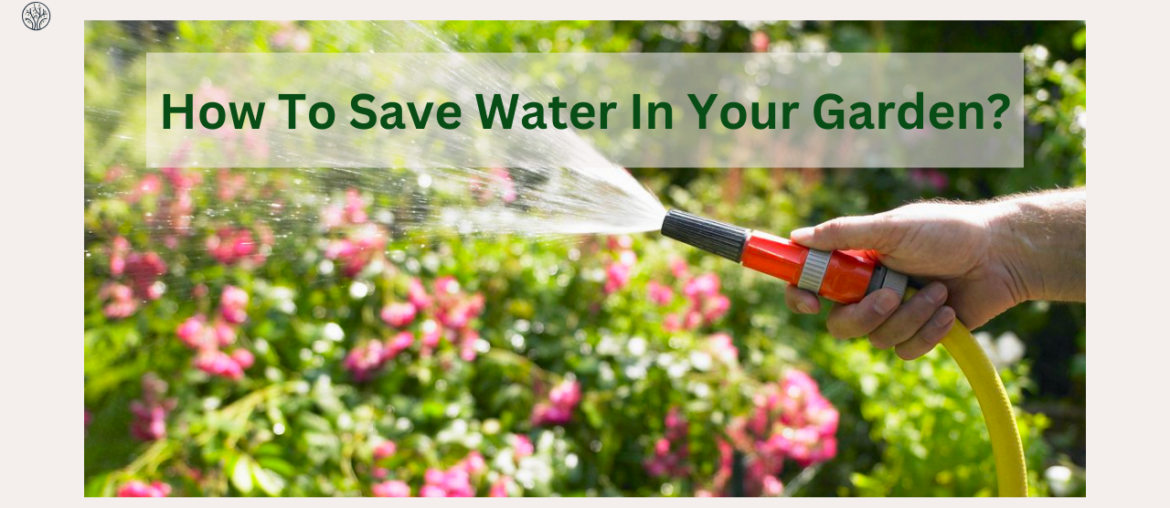Gardens are often havens of lush greenery and vibrant blooms, but they can also be significant water guzzlers. To strike a balance between having a beautiful garden and conserving water, it’s essential to adopt H2O-wise gardening practices. So, how to save water in your garden?
In this article, we’ll show you the answer by giving you 7 eco-friendly tips to help you achieve a more water-efficient garden.
Why Should You Save Water in the Garden?
World Food Day 2023 is coming up with the main theme ‘Water is Life, Water is Food. Leave No One Behind.’ This highlights the indispensable role of water in sustaining life on Earth and the need to manage it wisely.
The way we use water for gardening directly affects our water supply. Thus, it’s crucial to understand why saving water in this context is so important:
- Financial Savings:
For those of us on water meters (which make up an increasing percentage of households, currently at 40% and rising), saving water translates directly into monetary savings. Water bills can quickly add up, especially during the peak gardening season. By using less water in your garden, you can reduce your water bills significantly.
- Environmental Impact:
During peak demand periods, gardens can consume as much as 70% of our water supply. This high demand forces water suppliers to extract groundwater and tap into streams, often leading to environmental damage and increased water prices. By reducing your garden’s water usage, you can contribute to the preservation of natural water sources and ecosystems.
- Reduced Energy Consumption
Reducing water usage in your garden doesn’t just save water; it also has a positive impact on energy usage. Treating, pumping, and heating water require a significant amount of energy. By conserving water, you indirectly reduce the energy required for these processes, contributing to a more sustainable and energy-efficient future.
How To Save Water In Your Garden: 7 Eco-Friendly Tips
Water-wise gardening can actually produce healthier plants and offer higher yields than you may have ever had before. It’s possible to reduce outdoor water use by 20% to 50% with a few easy changes. But, how to save water in your garden? Here’s what you can do:
Ensure Healthy Soil
Healthy soil is the foundation of a thriving garden, and it plays a crucial role in water retention. One of the best ways to improve your soil’s ability to hold moisture is by adding organic matter. Compost, chopped-up leaves, or composted manure are excellent sources of organic matter. These materials not only enhance soil structure but also increase its water-holding capacity.
A simple rule of thumb is to incorporate one inch of compost into your garden soil every year. When planting, mix one part compost with one part soil in the planting hole. This blend will help the soil retain moisture for longer periods without becoming waterlogged. Additionally, compost enriches the soil with essential nutrients, promoting healthier plant growth.
In addition, consider using water-retentive granules or gel in your compost or potting mix for hanging baskets and containers. These additives can significantly reduce the frequency of watering, ensuring your potted plants stay hydrated.
Choose Plants Wisely
Plants play a significant role in water conservation, and therefore the choice of plants for your garden needs careful consideration. Not all plants have the same water requirements. Some plants thrive with minimal water, while others are water guzzlers.
You should opt for drought-tolerant varieties. These plants have evolved to thrive in arid conditions and can withstand periods of limited rainfall. By planting drought-tolerant species, you’ll not only conserve water but also save yourself the hassle of constant watering.
Native plants are also particularly well-suited for water-conscious gardening. They have adapted to your local climate and can often survive solely on natural rainfall. During droughts, you may need to provide some supplemental water, but it will be far less than what non-native species would demand. Additionally, native plants tend to be more pest-resistant, require minimal fertilization, and are generally lower-maintenance.
Another tip on how to conserve water in vegetable gardens is to prioritize vegetables and fruits that are in season. Seasonal fruits and vegetables naturally require less water to grow because they are attuned to the local climate and rainfall patterns. This not only conserves water but also ensures that your garden is more sustainable and productive.
Use The Right Watering Techniques

Knowing how to conserve water when watering plants is also important. When it comes to watering your garden, the method you choose can significantly impact water efficiency. Different watering methods cater to specific garden areas and plant types:
- Sprinklers:
Sprinklers are best suited for watering lawns and covering larger, unplanted areas. They offer excellent coverage but lack precision, making it challenging to target specific sections of your garden. To avoid water wastage, use sprinklers sparingly and only when necessary.
- Hoses and Watering Cans:
While hoses and watering cans require more effort, they are precise tools for delivering water directly to the base of plants, beneath the leaves. This targeted approach ensures that the surrounding soil remains dry, reducing weed growth and ensuring that all the water goes where it’s needed most.
- Seep Hoses:
Seep hoses are a fantastic option for established plants in rows. They allow water to seep out of small holes along the hose’s length. You can bury them under soil or mulch to minimize evaporation. However, it’s essential to note that seep hoses are most effective on heavy soil, as water can spread further sideways, covering a larger area compared to lighter soils.
- Automated Irrigation Systems:
For the utmost convenience and water efficiency, consider installing automated irrigation systems. These systems can be programmed to drip or trickle water into growing areas according to your schedule. While they are the most expensive option, they save time and effort. Be sure to adjust your system’s programming to account for hot and dry weather conditions, ensuring that your plants receive adequate hydration.
Set Up A Watering Schedule
Creating a watering schedule is one of the simple ways to save water and ensure your plants get the right amount of water. Every garden will benefit from having a watering schedule; a timer will automatically turn your drip irrigation system on and off. You’ll be able to provide the right amount of water for the plants you’re growing at the best time of day.
By adhering to a consistent watering schedule, you’ll use less water because you won’t have to compensate for missed days. When you miss watering for several days, the soil can become compacted, making it harder for water to penetrate. This results in the need for more water to hydrate your plants adequately. A well-maintained schedule prevents this issue and saves water in the process.
Water At The Right Time
When you water your garden can be just as important as how you water it. Timing matters, as it can affect water absorption and evaporation.
To maximize water efficiency, you should opt for early morning watering: Watering in the early morning hours (before 9 or 10 a.m) allows the plants to take advantage of that pick-me-up drink of water before the heat can set in. You also get more bang for your buck because the plants get to drink before the atmosphere does (less evaporation).
Moreover, avoid afternoon watering, when much of the water can be lost to evaporation. The heat of the day causes water to evaporate quickly, reducing its effectiveness in nourishing your plants.
It is also wise to avoid watering in the evening when the moisture can foster fungal diseases. The combination of cool, damp conditions during the night can create an environment conducive to fungi, which can harm your plants.
Save Water In Your Garden by Adding Mulch
Mulching is a time-tested technique for conserving water and enhancing soil health in your garden. By spreading a layer of mulch over your planting area, you can enjoy several benefits that contribute to water conservation.
Mulch acts as a protective barrier over the soil, preventing weeds from growing and competing for water with your plants. This is particularly important because weeds can soak up a significant amount of water that you intended for your garden.
Organic mulches, such as grass clippings free of weedkillers, evergreen needles, shredded bark, and fall leaves, are the best choice. These materials break down over time, adding valuable nutrients to the soil. As they decompose, they improve soil structure and fertility, creating a healthier environment for your plants.
One of the most significant advantages of mulch is its ability to reduce moisture evaporation from the soil’s surface. After watering your plants, moisture can quickly evaporate into the atmosphere. However, by adding a layer of mulch, you create a barrier that limits this loss. This means that more of the water you apply to your garden stays where it’s needed most, at the root level of your plants.
Furthermore, mulch helps maintain consistent soil moisture by reducing the impact of temperature extremes. In the scorching heat of summer, it keeps the soil cooler, preventing it from drying out too quickly. In the winter, it acts as an insulator, keeping the soil warmer and protecting your plants’ root systems.
Collect Rainwater And Reuse Greywater

Water conservation doesn’t stop at the garden hose. You can significantly reduce your water footprint by harnessing rainwater and reusing grey water from your household.
Rain is a precious gift from nature, and it’s a shame to let it go to waste. Rain barrels or cisterns are available at stores like Lowe’s or Home Depot. You should install them at your downspouts to capture rainwater. According to estimates, a 1,000-square-foot roof can collect about 625 gallons of water from just 1 inch of rain. This harvested rainwater can be used for garden irrigation, reducing your reliance on tap water.
Greywater, which is water from baths, showers, washing machines, and washing up, can be repurposed in your garden. Greywater diverters are readily available and can channel this water to your garden’s irrigation system or a water butt. It’s an eco-friendly way to utilize water a second time and minimize waste. Ensure that the household soaps and detergents you use are plant-friendly, but avoid water containing bleach, disinfectant, dishwasher salt, or strong cleaners, as they can harm your plants and soil.
Summing Up
In conclusion, if you’re wondering: ‘How to save water in your garden?’, then above are some of the simple ways to save water that you can try. By implementing these eco-friendly tips, you can save money on water bills, reduce your environmental impact, and contribute to the overall health of our planet. So, let’s embrace H2O-wise gardening and contribute to a more sustainable and water-conscious future.









